Ultimate Guide to Code Mining in '24: Top 5 Tools & 8 Use Cases
Software development focuses on delivering high-quality software in the shortest time possible. Yet, 49% of software development projects were reported as failing.1 Researchers deploy different data mining techniques and tools to locate and fix bugs to prevent such high rates of failure and shorten project time. There are two academic areas:
- Rule mining: A method to extract and analyze rules to improve and replicate them in new projects.
- Code mining: A discipline to detect clones, copied and pasted code fragments.
We have already covered business rule mining. In this article, we focus on explaining code mining so that project managers and software developers can acquire necessary knowledge about it.
What is code mining?
Code mining is a technique under software repository mining to extract useful information and insights from software code repositories. It involves:
- Analyzing the codebase of a software project
- Collecting data and metrics
- Improving the software development process.
Code mining can be applied to:
- Identify patterns and trends in code changes
- Assess the code base quality
- Discover potential bugs and vulnerabilities
- Generate reports and visualizations.
What are code mining tools?
Depending on a project’s specific goals and issues, developers can choose various tools to mine their codes. Some of the tools that have been deployed in code mining include:
- Static Code Analysis Tools: These tools analyze the code and point out potential issues, such as bugs, security vulnerabilities, and performance bottlenecks.
- Data Mining Tools: Data mining platforms can discover patterns and trends in the data. They can help identify relationships between different parts of the code and uncover hidden insights that may not be immediately apparent. Discover top data science tools.
- Machine Learning Tools: Intelligent tools that use algorithms and statistical models, such as classification, clustering, and regression analysis, can learn patterns and make predictions based on the data.
- Visualization Tools: Visualization tools can create graphs, charts, and diagrams to help developers easily understand complex data and identify patterns.
- Integrated Development Environments (IDEs): Many IDEs include built-in tools for code mining, such as code navigation, refactoring, and code analysis.
What are the steps in code mining?
Typically, code mining contains 6 steps:
- Collect data: The first step is to collect data from the software code repositories,such as GitHub and Bitbucket. This data may include the source code, version control history, bug reports, and other related information.
- Wrangle data: As the collected data tends to be noisy and unstructured, developers or testing teams must clean and wrangle it by filtering out irrelevant data, removing duplicates, and reformatting it.
- Identify features: Once the data is ready, teams must look for patterns and trends to identify features that can be helpful for further analysis.
- Analyze: Using the extracted features in the third step, developers and testers must apply machine learning and statistical methods, such as classification or regression, to make predictions.
- Visualize: Although it is an optional step, it is recommended to code mining teams to visualize the results of their analysis to streamline communication.
- Interpret and improve: Finally, code mining teams must focus on interpreting the results and start implementing the insights they draw. They can detect areas of the code that need improvement, inform developers on future development decisions, or report new insights.
8 use cases/applications of code mining
Some of the ways code mining can help software developers and testers include:
1. Understand the codebase
Code mining allows developers to identify data patterns and trends, providing a deeper understanding of the codebase. With higher visibility of their codebase, developers can make better decisions before optimizing, refactoring or extending their code.
2. Improve code quality
Code quality is analyzed in terms of three aspects (See Figure 1):
- Functional quality: The software must perform as it is intended to do for users. It must have few or no defects, a user-friendly interface and a well-functioning user workflow.
- Structural quality: Code must be well-structured. The structural quality considers code testability, maintainability, efficiency and security.
- Process quality: It focuses on assessing the entire process’s quality for the software’s development and delivery. Process quality attributes typically include meeting time and cost constraints.
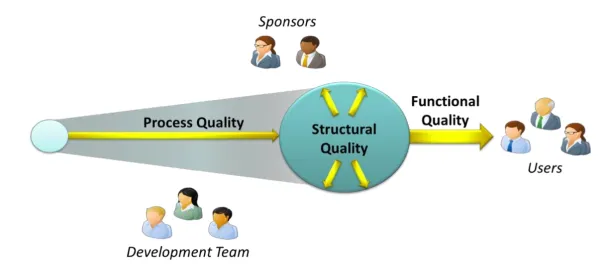
Code mining can improve the first two aspects of code quality by analyzing the codebase and identifying the potential issues, such as:
- Bugs and errors
- Security issues
- Code smells which are maintainability issues (e.g. increased complexity), confusing codes (e.g. duplicated code) and complicating maintenance (e.g. complex code).
A quick tip: Leverage process mining software to assess process quality and project performance.
3. Streamline the change impact analysis
By adding new features or improving software quality, developers change the codes, requiring modification in the entire source code. For instance, a change in a given function will lead to changing other functions that depend on this altered function.
Programmers are expected to do a change impact analysis to see the consequences (See Figure 2). The order of the change impact analysis follows:
- Determining the change
- Running change impact analysis to see the effects
- Implementing and testing the change
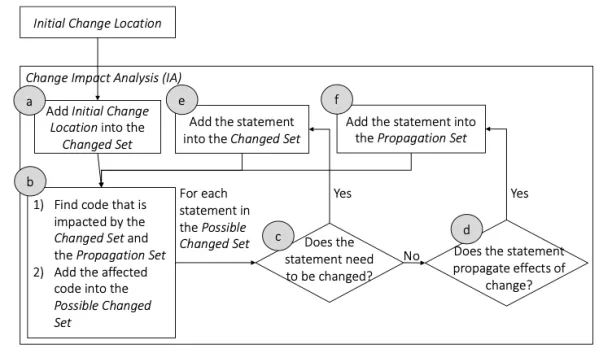
Code mining can be useful for analyzing the impact of changes made to the codebase. Developers can understand how a change will affect the rest of the code and identify potential risks or conflicts to take precautions. In the literature, since 2005, software repositories mining has become a prominent tool for applying impact change analysis (See Figure 3).
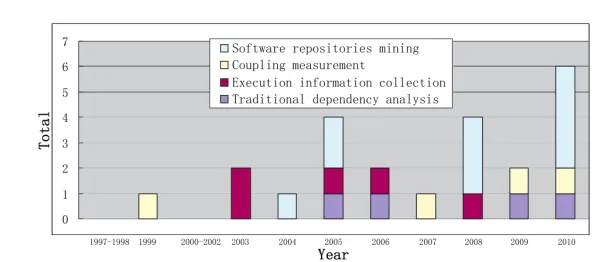
4. Increase performance
Code mining can optimize developers’ performance by automatically analyzing code repositories, saving time and effort. Therefore, developers and testers can allocate more time to higher value-added tasks, such as fixing critical problems or developing new features.
5. Speed up bugs analysis and debugging
Typically, a development project takes around 2 to 12 months.5Executives and customers push developers to finalize the project quickly, leading developers to neglect the testing phase. However, a fast debugging stage would improve product quality while shortening the time (See Figure 4).
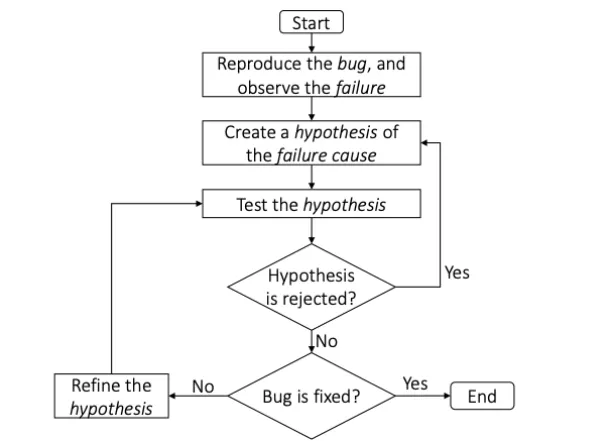
Code mining can help developers debug fast and efficiently by
- Analyzing bug reports and code history
- Identifying the root cause behind the issues
- Discovering the changes that lead to bugs and errors
6. Enable code refactoring
Code refactoring is a set of activities that clean and turn dirty or noisy codes into standard and pretty codes.
Code mining can identify areas of the code that need refactoring, such as duplicated code or complex code blocks. This way, developers can improve maintainability and readability of the codebase.
7. Facilitate code reviewing
Code review is a quality assurance activity to go over a source code of a program after implementation. Code reviews can discover defects in a given program by 75%, which is why they are essential to maintain and improve a software.7
Code mining can facilitate code reviewing since it can easily analyze code changes and bug fixes made by developers. Consequently, reviewers can identify potential issues and provide feedback to the developer.
8. Enhance predictive maintenance
Predictive maintenance refers to efforts to predict problems so that they can prevent them and maintain systems or software.
Developers can apply code mining to predict when maintenance is needed based on patterns and trends in the code. This way, they can proactively maintain the code and reduce the risk of unexpected downtime.
Further reading
Explore more on software development:
- Ultimate Guide to Continuous Performance Testing
- Auto Code Review: A Guide to Effective Code Reviews
If you have more questions about code mining, let us know:
External Links
- 1. “Modernization: Clearing a Pathway to Success.” StandishGroup. Revisited March 13, 2023.
- 2. Chappel, D. “THE THREE ASPECTS OF SOFTWARE QUALITY: FUNCTIONAL, STRUCTURAL, AND PROCESS.” Chappel & Associates. Revisited March 13, 2023.
- 3. Jiang, S., McMillan, C., & Santelices, R. (2017). “Do programmers do change impact analysis in debugging?.” Empirical Software Engineering, 22, 631-669. Revisited March 13, 2023.
- 4. Li, B., Sun, X., Leung, H., & Zhang, S. (2013). “A survey of code‐based change impact analysis techniques.” Software Testing, Verification and Reliability, 23(8), 613-646. Revisited March 3, 2023.
- 5. “Modernization: Clearing a Pathway to Success.” StandishGroup. Revisited March 13, 2023.
- 6. Jiang, S., McMillan, C., & Santelices, R. (2017). “Do programmers do change impact analysis in debugging?.” Empirical Software Engineering, 22, 631-669. Revisited March 13, 2023.
- 7. “Code Review.” Wikipedia. Revisited March 13, 2023.

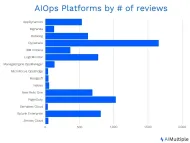
Comments
Your email address will not be published. All fields are required.